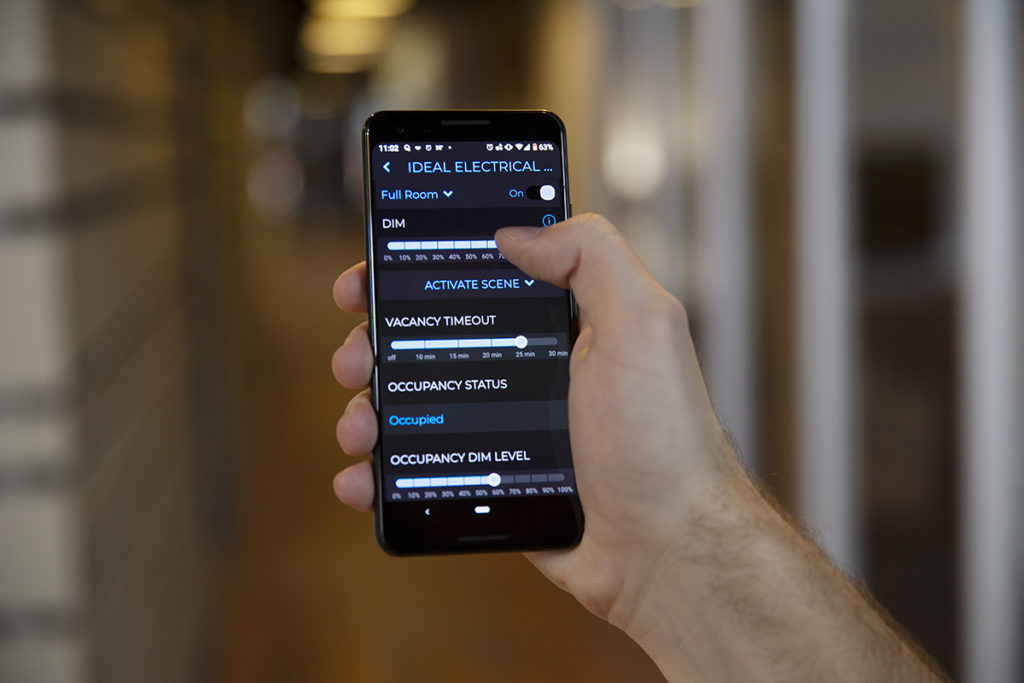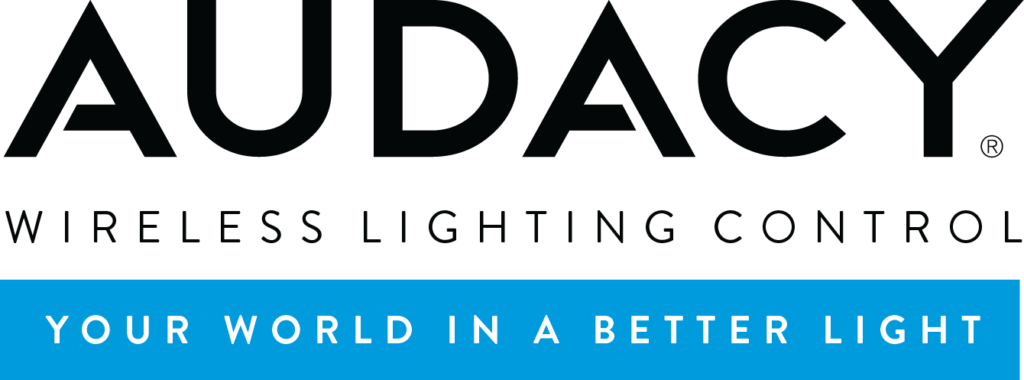Written by Jeff Schmeckpeper – Senior Field Support Engineer for Audacy® Wireless Lighting Control
We all know that LED lighting has brought on a revolution in the lighting design world. The wide variety of shapes and sizes of LED fixtures means lighting designers are incorporating a larger quantity of fixture types in a given space than ever before. Couple that with the fact that LEDs are dimmable and the need for more individual control of those fixtures is ever-increasing. Unfortunately, the strategies for adjusting the light levels in those zones haven’t changed much.
One common strategy used is to include a switch/dimmer for each zone on the wall. With the increase of control zones due to the LED revolution this can lead to very large switch banks. Not only do these large switch banks leave a poor visual impression, but they can also create confusion for the end user as they try to understand which switch controls which zone.
Another strategy is to control all the zones from a scene switch. While this reduces the clutter on the wall, it limits the flexibility for adjusting individual zones. Most organizations would be lucky to have one or two people on staff who have the skills needed to adjust the scenes, but more commonly, it requires an expensive site visit from a factory-trained technician.
Luckily, modern cloud-based lighting control systems such as the Audacy® System are breaking old lighting control paradigms by allowing the controls to move off of the walls and onto personal devices such as a phone, tablet or laptop. Here are just a couple of examples of the benefits of a cloud-based lighting control system:
Virtual Switches – These allow the end user to turn lights on or off and set a dim level just like a typical wall switch but from a personal device instead. They also eliminate the confusion of multiple switches because each virtual switch has a customizable label to tell you exactly what zone it is controlling. Virtual switches provide many benefits:
• Reducing wall clutter – A single physical switch can be used to allow general control of all zones for convenience and code compliance while virtual switches are utilized to provide the flexibility and control you need.
• Reduced cost – Virtual switches are included in the typical Audacy System functionality and can be setup either during initial commissioning or any time the addition of virtual switches is desired, so there is no reason to settle for anything less than exactly the amount of control you desire.
• Keyed switches – Keyed switches may be eliminated in public areas while maintaining control. Not only does a virtual switch make it impossible for the public to tamper with the lighting but it also has the potential to increase your staff’s productivity by eliminating travel time to physically access a keyed switch.
• Individual lighting control – Providing a virtual switch to an occupant for their office or even just the fixture above their desk allows them to customize their lighting for maximum productivity.
Scenes – While a scene switch in the space may still be necessary for the casual user, you can keep the number of scene options, and therefore real estate on the wall, to a minimum while being able to access additional scenes from the cloud. Benefits of using scenes on the Audacy cloud interface include:
• Quantity of scenes available – The Audacy System enables up to 16 unique scenes in each area to be recalled.
• Adjusting scenes – Modifying the scenes from the cloud interface is easy as the scenes can be adjusted using a simple slider for each zone. As you move the slider the lighting levels change in real time, allowing you to see exactly what the scene would look like. Simply press the save button when the scene looks the way you want it and those levels will be recalled the next time you select the scene.
Managing access to a cloud-based lighting control interface such as the Audacy System is simple. Different users can be individually assigned different levels of access according to the administrator’s criteria. There are no per user fees and an administrator can revoke access at any time. User accounts are protected by an individually selected password.
Overall, as app-based control becomes the norm in every other aspect of our lives, it only makes sense that it is also translated to lighting control. The ease of use for this type of technology and the customization options allow for the best possible experience for the occupant of a space.





